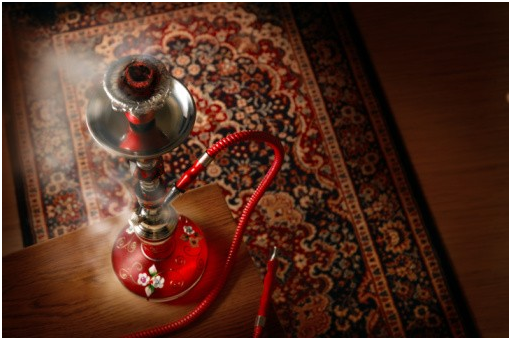The Head of the Tobacco and Substance Abuse Unit of the Food and Drugs Authority, Mrs Olivia Boateng, has stressed that the belief among many young people that ‘shisha’ is not as harmful as cigarette is not true.
She said many youngsters claimed that because the tobacco in shisha was flavoured and also passed through water before it was inhaled, it did not harm smokers.
Mrs Boateng noted that the carcinogens and nicotine in cigarettes which make them dangerous to human health are still present in shisha and, therefore, shisha is equally harmful.
Shisha is usually smoked in a glass-bottomed-jar water-pipe (Hookah) in which fruit-flavoured tobacco covered with foil and roasted with charcoal is placed. The tobacco smoke passes through a water chamber and is inhaled deeply and slowly via a hose pipe attachment.
Mrs Boateng, who was speaking to the Graphic Youth World, pointed out that a regular shisha smoker should expect to be at risk of similar health problems that cigarette smokers suffer, which include respiratory, cardiovascular, oral cavity and teeth diseases.
She also pointed out that the volume of smoke inhaled in an hour-long shisha session by any smoker is estimated to be the equivalent of smoking between 100 and 200 sticks of cigarettes.
Mrs Boateng indicated that apart from the nicotine content, laboratory analysis of water-pipe smoke revealed measurable levels of carcinogens, including tobacco-specific nitrosamines, polycyclic aromatic hydrocarbons (PAH), volatile aldehydes such as formaldehyde, and benzene and toxicants such as nitric oxide and heavy metals.
She added that the burning charcoal generated high levels of carbon monoxide (CO) and carcinogenic PAH which were harmful to the health of the smoker.
“These toxic substances result in addiction, heart and lung diseases and cancer in cigarette smokers, as well as in shisha users,” she further explained. The Head of the authority, therefore, asked the youth to avoid negative peer pressure and stay away from tobacco and its products because every cigarette smoked shortened one’s life by about five minutes, stressing that that was about the same time one used in smoking that piece.
She said manufacturers and importers of tobacco, as well as tobacco products, would now be compelled to use pictorial health warnings on the product packages to cover 50 percent at the front and 60 per cent at the back of the product.
Mrs Boateng said research had shown that pictorial warnings were far more effective because they were more likely to be noticed and communicate better about health risks, as well as help reach out to a large number of people who cannot read.
She warned that failure to adhere to this law was an offence which would attract severe sanctions and punishment, including jail terms.




